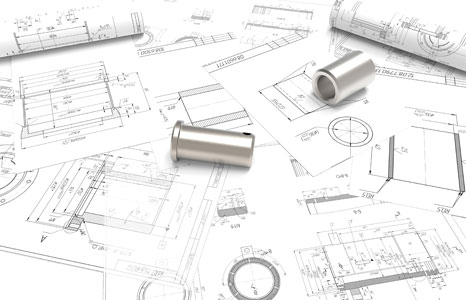Resources
| Gauge | Mild Steel | Galvanized Steel | Stainless Steel |
|---|---|---|---|
| 3 | 0.2391 | 0.2500 | |
| 4 | 0.2242 | 0.2344 | |
| 5 | 0.2092 | 0.2187 | |
| 6 | 0.1943 | 0.2031 | |
| 7 | 0.1793 | 0.1875 | |
| 8 | 0.1644 | 0.1680 | 0.1719 |
| 9 | 0.1495 | 0.1532 | 0.1562 |
| 10 | 0.1345 | 0.1382 | 0.1406 |
| 11 | 0.1196 | 0.1233 | 0.1250 |
| 12 | 0.1046 | 0.1084 | 0.1094 |
| 13 | 0.0897 | 0.0934 | 0.0937 |
| 14 | 0.0747 | 0.0785 | 0.0781 |
| 15 | 0.0673 | 0.0710 | 0.0703 |
| 16 | 0.0598 | 0.0635 | 0.0625 |
| 17 | 0.0538 | 0.0575 | 0.0562 |
| 18 | 0.0478 | 0.0516 | 0.0500 |
| 19 | 0.0418 | 0.0456 | 0.0437 |
| 20 | 0.0359 | 0.0396 | 0.0375 |
| 21 | 0.0329 | 0.0366 | 0.0344 |
| 22 | 0.0299 | 0.0336 | 0.0312 |
| 23 | 0.0269 | 0.0306 | 0.0281 |
| 24 | 0.0239 | 0.0276 | 0.0250 |
| 25 | 0.0209 | 0.0247 | 0.0219 |
| 26 | 0.0179 | 0.0217 | 0.0187 |
| 27 | 0.0164 | 0.0202 | 0.0172 |
| 28 | 0.0149 | 0.0187 | 0.0156 |
| 29 | 0.0135 | 0.0172 | 0.0141 |
| 30 | 0.0120 | 0.0157 | 0.0125 |
| 31 | 0.0105 | 0.0142 | 0.0109 |
| 32 | 0.0097 | 0.0134 | 0.0102 |
| 33 | 0.0090 | 0.0094 | |
| 34 | 0.0082 | 0.0086 | |
| 35 | 0.0075 | 0.0078 | |
| 36 | 0.0067 | 0.0070 |
Stainless Steel Finishes
Standard mill finishes can be applied to flat rolled stainless steel directly by the rollers and by mechanical abrasives. Steel is first rolled to size and thickness and then annealed to change the properties of the final material. Any oxidation that forms on the surface (scale) is removed by pickling, and the passivation layer is created on the surface. A final finish can then be applied to achieve the desired aesthetic appearance.
M21 SMOOTH SPECULAR: Cutting with aluminum oxide compounds, starting with relatively coarse grits and finishing with 320 grit, using a peripheral wheel speed of 6,000 F.P.M. followed by buffing with aluminum oxide buffing compounds using a peripheral wheel speed of 7,000 F.M.P.
M22 SPECULAR: Cutting with compounds as for the M21 Finish, followed by a final light buffing.
M31 FINE SATIN: Wheel or belt polishing with aluminum oxide or silicon carbide abrasives of 180- 240 grit, using a peripheral speed of 6,000 F.M.P.
M32 MEDIUM SATIN: Same as above, however, abrasives of 120-180 grit are used.
M33 COARSE SATIN: Same as above, however, abrasives of 180-120 grit are used.
#3 FINISH: A polish obtained by finishing with an approximately 100 grit abrasive, generally used as a semi-final finish.
#4 FINISH: General purpose, bright finish, with a 150-240 mesh abrasive, following initial grinding with coarser abrasives.
#4 NONDIRECTIONAL SATIN: 80-150 grit with no grain direction.
#4 LONG GRAIN: Elongated continuous grain.
#6 FINISH: A soft satin finish, with lower reflectivity than the #4 finish. It is produced by Tampico like brushing the #4 finish, using a medium abrasive with oil (when available).
#6 FINISH MIRROR BRITE: A highly finished product produced by buffing a surface which has been finely ground. Grit lines produced are heavier than a #7 finish.
#7 FINISH: A highly reflective finish produced by buffing a surface which has first been finely ground, but grit lines are not removed through the final buffing process.
#8 FINISH: The most reflective finish commonly produced. It is obtained by polishing with successively finer abrasives, then buffing with a very fine buffing compound. The surface is essentially free of grit line, though a certain angles some are still visible.
#8 ARCHITECTURAL: Same as above, but through a programmed process each sheet receives additional color buffing to achieve greater reflectivity.
#12 NONDIRECTIONAL MIRROR: A perfect mirror. No grain line.







